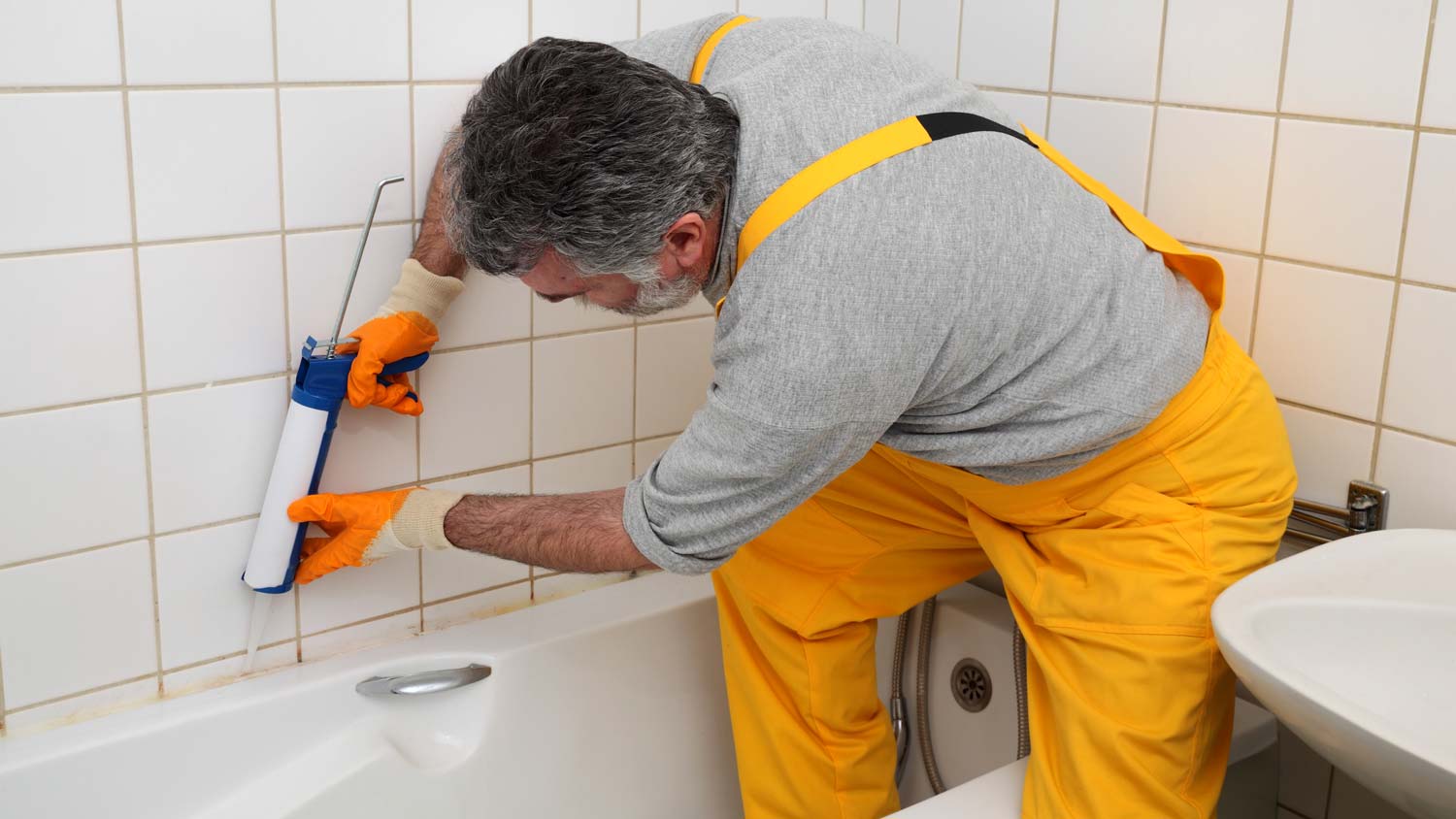.jpg?impolicy=leadImage)
Sealing your grout goes a long way toward extending its life span. This guide breaks down the cost factors for sealing grout, including size, materials, and labor.


How much sealant you need depends on the size the gap you're filling.
To determine how many ounces of caulk you need, multiply the depth, width, and length of the joint to get the volume in cubic inches, then multiply that number by 0.542.
When calculating, add about 5% for waste, regardless of the sealant you're using.
Construction sealants such as caulk, silicone, fireblock, and foam are available in a seemingly endless selection of types and colors. Once you’ve chosen one, figuring out how much sealant you need is easy: It’s just a matter of measuring the gap you're trying to fill.
Whether you're putting the finishing touches on your new bathroom, using roof sealant to protect your home, or even trying to determine the cost of sealing your concrete, part of understanding how to caulk is knowing how much of it to use.
To determine how much sealant you need, you'll need to know how deep, wide, and long the gap you're filling is. The chart below shows the maximum yield you should get from a typical 10-ounce tube of caulk.
| Joint depth (inches) | Coverage (linear feet) for 1/4-inch joint width | Coverage (linear feet) for 3/8-inch joint width | Coverage (linear feet) for 1/2-inch joint width |
|---|---|---|---|
| 1/8 | 48 | 36 | 24 |
| 3/8 | 16 | 12 | 8 |
| 1/2 | 12 | 9 | 6 |
While the sealant you purchase will have coverage estimates on the packaging, it can amount to a guessing game. To accurately determine how much sealant you need, you'll need to do some math.
Carefully measure the average depth and width of the gap you need to fill. Convert the inch fraction to a decimal number.
1/8" = 0.125
1/4" = 0.25
3/8" = 0.375
1/2" = 0.5
Now measure the length of the gap in inches.
Multiply the depth by the width by the length. Your result will be in cubic inches. Now multiply the result by 0.542, which is the amount of cubic inches in an ounce of sealant.
1. Sealant volume (cubic inches) = joint depth (inch fraction) x joint width (inch fraction) x joint length (inches)
2. Sealant volume (ounces) = Sealant volume (cubic inches) x 0.542
When calculating your sealant needs, be sure to add roughly 5% for waste, regardless of the type of sealant you're using.
Below are some tips to get the most accurate joint measurements, which will help ensure you purchase the right amount of sealant for the job.
To measure gap joints, use a combination of a tape measure, flexible measuring tape, and a ruler, depending on your project. To determine precise depth, consider using a feeler gauge or micrometer.
Using a sealant in a triangular or corner joint is also common. This is necessary around windows or inside corners where one material meets another. Measure the base and height of what will be a triangular sealant bead. Divide by 1/2 to determine the depth.

Applying sealant is excellent for increasing your DIY skills. However, it takes practice to really nail it.
Many homeowners opt to hire a local handy person when looking for someone to tackle bathroom caulking or other sealant needs.
From average costs to expert advice, get all the answers you need to get your job done.
.jpg?impolicy=leadImage)
Sealing your grout goes a long way toward extending its life span. This guide breaks down the cost factors for sealing grout, including size, materials, and labor.

Tile varies dramatically in price, but there’s something for every budget. This guide will help you plan for tile installation costs, no matter the project.

Damaged tiles should be fixed right away. In this guide, find out all of the different factors that affect your tile repair cost.

Discover the pros and cons of installing a quartz versus tile backsplash when choosing your next kitchen or bathroom design.

Regrouting your shower takes some time because it involves multiple days’ worth of work. Use this guide to help you decide who to hire to regrout your shower.

You've figured out which tiles you want, but what about the details? This guide will help you figure out how to choose tile trim that will best suit your home.